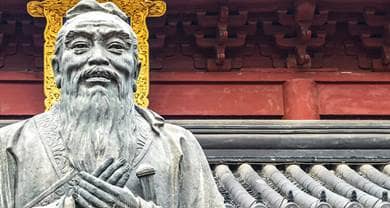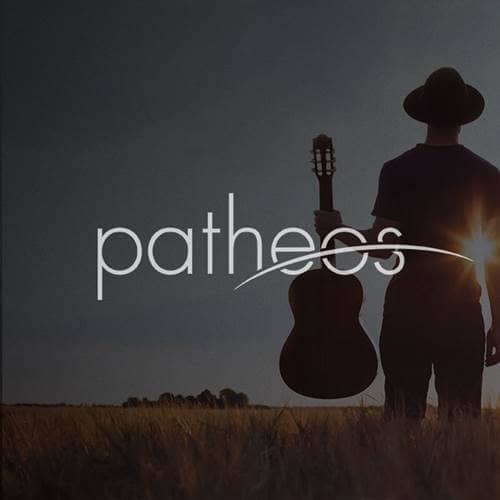- Trending:
- Pope Leo Xiv
- |
- Israel
- |
- Trump
- |
- Social Justice
- |
- Peace
- |
- Love

RELIGION LIBRARY
Confucianism
Leadership
The model Confucian leader was the scholar-official. Years of education in the classic texts culminated in a rigorous series of examinations. Positions within the government were assigned based on the results. Subsequent positions would be based on performance and on one's status with respect to the ruling powers.
 Although Confucian temples were constructed by governments across East Asia throughout the past two millennia, such institutions never attracted the kind of steady patronage from ordinary people enjoyed by their Buddhist, Taoist, and Shintō counterparts. Instead, Confucian temples functioned as centers of academic activity (where students preparing for imperial civil service examinations could study and pray) and symbols of state rectitude and power (where descendants of Kongzi, at least in China, would preside over public ritual occasions intended to bring prosperity to the nation). Unlike Buddhist, Taoist, or Shinto institutions, no permanent priesthood maintained Confucian temples, and the very notion of monasticism was alien to the Confucian tradition.
Although Confucian temples were constructed by governments across East Asia throughout the past two millennia, such institutions never attracted the kind of steady patronage from ordinary people enjoyed by their Buddhist, Taoist, and Shintō counterparts. Instead, Confucian temples functioned as centers of academic activity (where students preparing for imperial civil service examinations could study and pray) and symbols of state rectitude and power (where descendants of Kongzi, at least in China, would preside over public ritual occasions intended to bring prosperity to the nation). Unlike Buddhist, Taoist, or Shinto institutions, no permanent priesthood maintained Confucian temples, and the very notion of monasticism was alien to the Confucian tradition.
If the scholar-official was the "priest" or "pastor" of Confucianism, then his true "church" was the government office and the village center. At the level of both state and community, the Confucian scholar-official was expected to serve as the selfless advocate for virtue, the compassionate administrator of resources, and the learned guardian of tradition.
 One exemplar of the Confucian scholar-official, as well as an influential thinker and teacher in his own right, was the Ming dynasty administrator and general Wang Yangming (1472-1529 C.E.). In his government career, Wang opposed political corruption, spending three years in exile as a punishment for bringing his colleagues' crimes to light, and proved effective in suppressing rebellions, building schools, and reconciling political dissidents. In his career as a teacher, he attracted hundreds of disciples. His theory of zhixing heyi (the unity of knowledge and action) based on human beings' liangzhi (innate knowledge of the good) led him to place his faith for social transformation in human beings who lived out their innate morality through concrete actions in this world. In this, he was typically Confucian, insofar as Confucians see no necessary conflict between personal and social welfare, provided that one truly seeks the good for oneself. If one seeks the good for oneself, one is sure to bring about the good for others, and vice versa. Both in office and in the academy, Wang was a model Confucian insofar as he pursued self-cultivation both by studying the classics and by serving the people. Only fifty-five years after his death, his image was enshrined in Confucian temples, where it received sacrifice for generations alongside images of Kongzi and other Confucian saints.
One exemplar of the Confucian scholar-official, as well as an influential thinker and teacher in his own right, was the Ming dynasty administrator and general Wang Yangming (1472-1529 C.E.). In his government career, Wang opposed political corruption, spending three years in exile as a punishment for bringing his colleagues' crimes to light, and proved effective in suppressing rebellions, building schools, and reconciling political dissidents. In his career as a teacher, he attracted hundreds of disciples. His theory of zhixing heyi (the unity of knowledge and action) based on human beings' liangzhi (innate knowledge of the good) led him to place his faith for social transformation in human beings who lived out their innate morality through concrete actions in this world. In this, he was typically Confucian, insofar as Confucians see no necessary conflict between personal and social welfare, provided that one truly seeks the good for oneself. If one seeks the good for oneself, one is sure to bring about the good for others, and vice versa. Both in office and in the academy, Wang was a model Confucian insofar as he pursued self-cultivation both by studying the classics and by serving the people. Only fifty-five years after his death, his image was enshrined in Confucian temples, where it received sacrifice for generations alongside images of Kongzi and other Confucian saints.
 In the modern era, in which governments no longer require Confucian commitments from their civil servants, the most visible Confucian leaders are to be found among Chinese university professors of philosophy. The victory of the Communist forces in China's mid-20th century civil war led to the self-exile of many Confucian intellectuals to Taiwan and Hong Kong. In these redoubts of Confucianism, philosophers such as Xiong Shili (1885-1968) and his students Tang Junyi (1909-1978), Mou Zongsan (1909-1995), and Xu Fuguan (1904-1982) devoted their personal and professional energies to reinventing Confucianism as a force to be reckoned with in the age of democracy and science. Some of these thinkers' students, such as the Harvard University professor Tu Weiming (b. 1940), became active in promoting Confucianism as a partner in global interreligious dialogue as well as in the environmental and human rights movements. To a great extent, Confucianism as an organized tradition now is more intellectually and spiritually alive outside of China than in China, and the center of Confucian activity largely is located in academic institutions (both in China and overseas), which enjoy a great deal of prestige among Chinese communities.
In the modern era, in which governments no longer require Confucian commitments from their civil servants, the most visible Confucian leaders are to be found among Chinese university professors of philosophy. The victory of the Communist forces in China's mid-20th century civil war led to the self-exile of many Confucian intellectuals to Taiwan and Hong Kong. In these redoubts of Confucianism, philosophers such as Xiong Shili (1885-1968) and his students Tang Junyi (1909-1978), Mou Zongsan (1909-1995), and Xu Fuguan (1904-1982) devoted their personal and professional energies to reinventing Confucianism as a force to be reckoned with in the age of democracy and science. Some of these thinkers' students, such as the Harvard University professor Tu Weiming (b. 1940), became active in promoting Confucianism as a partner in global interreligious dialogue as well as in the environmental and human rights movements. To a great extent, Confucianism as an organized tradition now is more intellectually and spiritually alive outside of China than in China, and the center of Confucian activity largely is located in academic institutions (both in China and overseas), which enjoy a great deal of prestige among Chinese communities.
Study Questions:
1. Traditionally, which persons were seen as model Confucian leaders?
2. How did Wang Yangming exemplify Confucian leadership?
3. Who provides leadership for Confucian communities today?










